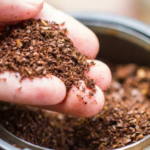If you’re looking for a tree that combines beauty, history, and versatility, the maple_tree should be at the top of your list. In fact, the maple tree is more than just a tree — it’s a cultural icon, a backyard favorite, and an essential part of many ecosystems around the world. With its stunning fall colors, recognizable leaves, and wide variety of species, it’s no surprise people love planting and learning about these trees.
Whether you’re drawn to the deep red hues of the Japanese maple_tree, the sturdy sugar maple_tree, or the fast-growing silver maple tree, there’s a maple for everyone. And if you’re a fan of video games like Stardew Valley, you’ve probably come across the Stardew Valley maple tree, which adds even more charm to this beloved species.
The History and Significance of Maple Trees
 Throughout history, maple_trees have represented strength, balance, and promise. In Canada, the maple tree leaf is even a national symbol — proudly displayed on the country’s flag. Indigenous peoples used the maple_tree not just for its shade but for its sap, which could be boiled down into delicious syrup. Over the centuries, this tree has been cherished for both its beauty and utility.
Throughout history, maple_trees have represented strength, balance, and promise. In Canada, the maple tree leaf is even a national symbol — proudly displayed on the country’s flag. Indigenous peoples used the maple_tree not just for its shade but for its sap, which could be boiled down into delicious syrup. Over the centuries, this tree has been cherished for both its beauty and utility.
Popular Types of Maple Trees
There are over 100 species of maples, but let’s explore the most popular and widely planted varieties:
1. Japanese Maple Tree
-
Small, decorative, and perfect for landscaping
-
Known for vibrant red and purple foliage
-
Includes dwarf varieties like the dwarf Japanese maple_tree, ideal for small gardens
2. Sugar Maple Tree
-
Famous for producing maple syrup
-
Offers stunning orange and yellow fall foliage
-
Grows well in colder climates
3. Red Maple Tree
-
Fast-growing with brilliant red leaves in autumn
-
Great for urban areas and tolerant to a wide range of soils
-
Sometimes confused with Japanese maples but larger and more shade-tolerant
4. Silver Maple Tree
-
Extremely fast-growing
-
Silvery undersides on its leaves make it shimmer in the wind
-
Common in city parks due to its expansive canopy
Maple Tree Leaves: Nature’s Masterpiece
Without a doubt, maple_tree leaves are among the most recognizable in the world. With their iconic lobed shape and vivid seasonal colors, they’re admired by everyone — from children collecting them in fall to artists capturing their beauty on canvas. Some common traits of these leaves include:
-
3 to 5 lobes (depending on the species)
-
Bright green in spring and summer
-
Shades of red, orange, or yellow in the fall
-
Used as symbols in flags, logos, and even tattoos
Moreover, the maple_tree leaf plays a crucial role in photosynthesis and oxygen production, making the tree both attractive and beneficial for the environment.
Growing a Maple Tree: What You Need to Know
Growing a maple_tree is relatively easy, especially if you choose the right type for your climate. Here’s what you should consider:
Soil
-
Well-draining soil is ideal
-
Avoid overly sandy or salty soils
Sunlight
-
Most maple trees prefer full sun to partial shade
-
The Japanese maple_tree does best in filtered or indirect sunlight
Water
-
Young trees need frequent watering
-
Mature trees are drought-tolerant, especially the sugar maple_tree
Spacing
-
Make sure to give your maple_tree enough room to grow — some species can reach 50 feet or more!
Maple Tree Seeds: Starting From Scratch
If you’re considering growing a maple_tree from seed, it’s totally possible — and incredibly rewarding. Maple tree seeds are also known as “samaras,” or “helicopter seeds,” thanks to their spinning descent from the branches in spring.
To grow your own:
-
Collect seeds in the fall
-
Stratify them (chill in the fridge) for 90 days
-
Plant them in moist soil and wait for germination in early spring
While it may take years to grow a fully developed maple_tree, the journey is definitely worth it.
Maple Tree Inn: A Charming Touch of Maple in Real Life
 You may have heard of the Maple_Tree Inn, a charming bed and breakfast that plays off the tree’s peaceful and cozy image. Located in rural areas of the U.S., these inns often offer maple-based products like syrup and even maple-infused breakfasts. Although not directly tied to the tree itself, places like the Maple_Tree Inn show just how deeply ingrained this tree is in American culture.
You may have heard of the Maple_Tree Inn, a charming bed and breakfast that plays off the tree’s peaceful and cozy image. Located in rural areas of the U.S., these inns often offer maple-based products like syrup and even maple-infused breakfasts. Although not directly tied to the tree itself, places like the Maple_Tree Inn show just how deeply ingrained this tree is in American culture.
Maple Trees in Stardew Valley
In the world of gaming, the Stardew Valley maple_tree is a popular in-game plant that produces maple syrup, which is a valuable item for crafting and selling. Gamers often tap their maple_trees with a “tapper” to harvest syrup, much like in real life. This little detail in Stardew Valley makes the virtual farming experience feel more authentic and educational.
Landscaping With Maple Trees
Choosing the right maple_tree for your garden can transform your landscape. Thanks to the variety of sizes, colors, and growth habits, there’s a maple for every space. Here are a few ideas:
-
Front yard focal point: Use a Japanese maple_tree to create a striking centerpiece.
-
Backyard shade: Plant a silver maple_tree for fast shade coverage.
-
Small garden accent: Opt for a dwarf Japanese maple_tree, which offers beauty in a compact form.
The Environmental Benefits of Maple Trees
Maple trees don’t just look good — they also offer serious ecological benefits. Here’s why planting a maple_tree is a great decision:
-
Carbon absorption: Maple_trees help combat climate change
-
Air purification: They filter out pollutants and provide oxygen
-
Wildlife habitat: Birds and squirrels love maple_trees
-
Erosion control: Their roots help prevent soil erosion
In short, adding a maple_tree to your space is both visually and environmentally rewarding.
Author Bio Table
| Name | Maple Tree Enthusiast Guide |
|---|---|
| Topic Expert In | Tree species, gardening, landscaping |
| Special Focus | Maple trees, Japanese maples, urban forestry |
| Experience | 10+ years in horticulture and botany |
| Location | Pacific Northwest, USA |
| Written For | Garden blogs, eco websites, nature forums |
Final Thoughts
To sum it up, the maple_tree is a timeless, versatile, and stunning tree species that continues to captivate people around the world. From the ornamental beauty of the Japanese maple_tree to the usefulness of maple_tree seeds, there’s something uniquely special about this tree in every form.
Whether you’re growing a dwarf Japanese maple_tree in your garden, tapping a sugar maple_tree for syrup, or simply admiring the red leaves in fall, this tree deserves its legendary status. So the next time you spot a maple_tree leaf, you’ll know there’s a whole world of beauty and history behind it.
FAQs
1. What is the best maple tree for small gardens?
The dwarf Japanese maple tree is ideal for compact spaces due to its size and color.
2. How fast do maple trees grow?
The silver maple tree is one of the fastest-growing types, adding 2–3 feet per year.
3. Can I grow a maple tree from seed?
Yes! Maple tree seeds can be collected, stratified, and planted for new growth.
4. What are maple tree leaves used for?
They are mostly ornamental, but also play a big role in photosynthesis and are symbols in art and culture.
5. Is the maple tree featured in any video games?
Yes, the Stardew Valley maple tree is part of the game’s farming system and produces syrup.






